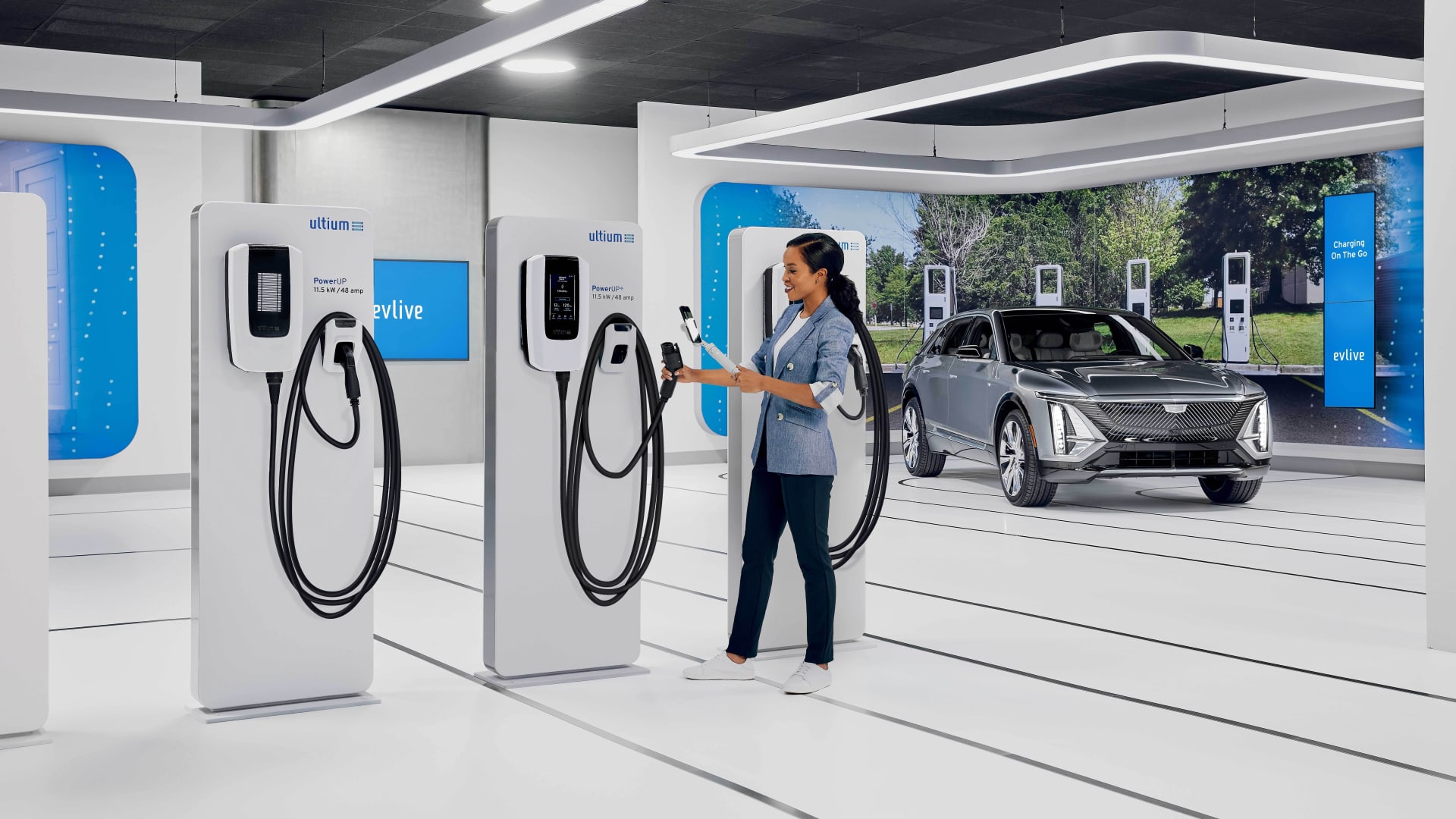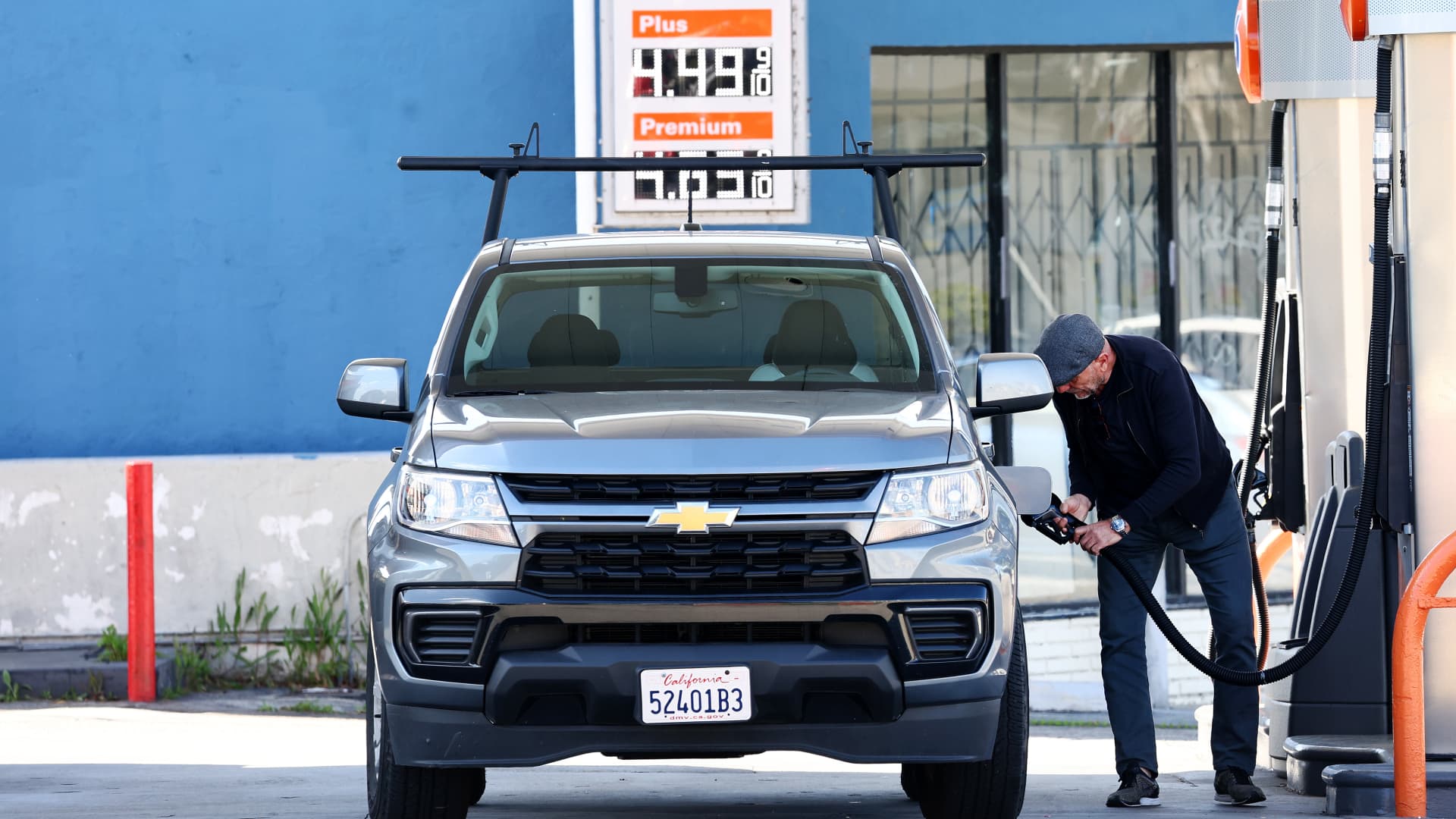GM has launched EV Live, a free online platform that connects electric vehicle owners or consumers who have questions about zero-emission cars and trucks with an expert who can answer them.
Courtesy: GM
DETROIT – Buying a vehicle has never been easier. But buyers entering traditional dealer showrooms in the foreseeable future may face a new challenge: an alphabet soup of “electrified” vehicle offerings.
As the adoption of all-electric vehicles continues in the United States, automakers are increasingly releasing various hybrid vehicles as alternatives to electric vehicles and traditional gasoline engines. A variety of models means more choice for customers, but also more complexity for automakers and consumers, many of whom are returning to the new car market for the first time in years after unprecedented supply chain shortages and record used car prices.
“More choice in the market is good for consumers, but only if they understand the differences,” said Paul Waatti, director of industry analysis at AutoPacific. “There needs to be more clarity about what the terms and acronyms actually mean and what the potential advantages and disadvantages are.”
A car buyer today has the choice between conventional internal combustion engine (ICE) vehicles; mild hybrid electric vehicles (MHEVs); hybrid electric vehicles (HEVs); plug-in hybrid electric vehicles (PHEVs); Fuel cell electric vehicles (FCEVs) and battery electric vehicles (BEVs), also commonly known as electric vehicles. Also coming later this year Stellantis: Range extended electric vehicles (REEVs), which are similar to plug-in hybrid vehicles but can function exclusively as electric vehicles and whose electric motors are powered by a gas engine.
Each type of vehicle may be better for a different type of customer. With the exception of electric vehicles and fuel cell vehicles, all continue to feature a traditional internal combustion engine combined with “electrified” technologies such as a battery or motor to increase performance or fuel economy.
Heather Seymour of St. Johns, Florida, said she did some research before purchasing a 2022 Jeep Wrangler Rubicon plug-in hybrid electric vehicle, known as the 4xe model.
“It was clear to me that I wanted to dive into the waters of hybrid vehicles, so to speak. “I wasn’t ready to go full electric yet, so the plug-in was definitely of interest to me,” said Seymour, who said she normally takes advantage of the SUV’s all-electric range except on longer trips. “The more we learned about it, the more we realized what we wanted.”
EV naming
While consumers may not need to know every acronym or technology to find their right model, automakers aren’t helping the situation with their consumer-focused naming.
For example, Hyundai’s Genesis brand refers to its all-electric vehicles as “electrified,” while many others reserve that term for hybrid vehicles. Chrysler’s Pacifica minivan is a plug-in hybrid called a regular “hybrid,” and Toyota markets some of its traditional hybrids as “hybrid electric vehicles.” Stellantis says its REEV vehicles are not PHEVs, although they function similarly.
“Every car manufacturer uses different terms. There is no standardization and that leads to some confusion on the consumer side,” Waatti said.
GM’s 2024 Chevrolet Equinox EV (right) next to a gas-powered Chevy Equinox on May 16, 2024 in Detroit.
Michael Wayland/CNBC
Some car manufacturers such as General Motors Also use traditional nameplates like Chevrolet Blazer and Equinox for new electric vehicles, which have little to nothing in common with their gasoline-powered counterparts other than the name.
Stellantis’ Jeep also uses the Wagoneer moniker for two large gas-powered SUVs and a smaller, all-electric Wagoneer “S” SUV.
Jeep CEO Antonio Filosa said he doesn’t fear confusion because the brand has a strong naming tradition and customers can decide which vehicle is best suited to their needs.
“I believe we need education, but after education we have a lot of choice for the consumer,” he said in a recent interview. “Everything benefits the consumer. He will have a lot of flexibility.”
Education is the key
One thing automotive executives from Japan and South Korea to Detroit and Germany agree on is the need for consumer education.
Whether they are electrified or fully electric vehicles, they are critical for automakers to meet stricter emissions and fuel consumption targets, as well as set production benchmarks, reduce prices and increase profits.
“We don’t want to force a customer to do something they’re not willing to do,” Russell Wager, vice president of marketing for Kia America, told CNBC earlier this year. “We’re trying our best to educate them.”
2024 Jeep Wagoneer S EV
jeep
Kia and its dealers have posted myth-busting pages online to answer concerns or frequently asked questions about electric and hybrid vehicles. They range from technical questions about batteries to practical questions like whether you can drive an electric vehicle through a car wash (you can).
GM has gone one step further. The Detroit automaker launched “EV Live” in 2022. It is an online video platform, now known as “GM Energy Live,” that allows participants to interact in person with electric vehicle specialists and learn about electric vehicles and charging to inform.
Ford engine recently launched its own video-based training program aimed at its more than 3,000 franchised dealers across the U.S. to improve customer service, better engage employees and provide dealers and the company with more data to help sell vehicles .
Auto executives say it’s up to companies and their dealers to be trained and educated about the benefits of the vehicles, whatever they may be.
“At the end of the day, every customer is completely different,” said Jérémie Papin, chairman of Nissan America, earlier this year. “I think it comes down to what the vehicle can do for them,” not necessarily how the technology works, he said.
Automotive alphabet soup
The automotive industry has more powertrain and “drivetrain” options than ever before. Here’s a breakdown:
- Internal combustion engine (ICE): A “traditional” vehicle with an engine that runs on gasoline or diesel.
- Mild Hybrid Electric Vehicle (MHEV): An internal combustion engine vehicle that operates largely like a non-hybrid vehicle, but may have minimal electrified features such as a small battery, regenerative braking, or an electric motor.
- Hybrid electric vehicle (HEV): Consider the Toyota Prius, a vehicle with a hybrid drive system combined with an engine.
- Plug-in hybrid electric vehicle (PHEV): These vehicles feature an internal combustion engine combined with a hybrid system, including a larger battery than traditional hybrid vehicles and a power outlet to charge the vehicle battery. They typically allow the driver to travel a certain number of miles on the battery before the engine powers the car or truck.
- Battery electric vehicle (BEV): These fully electric vehicles do not have an internal combustion engine. Instead, they contain an electric motor powered by a large battery. They must be charged via a power outlet and a charging port or charging station.
- Fuel Cell Electric Vehicle (FCEV): Hydrogen fuel cell electric vehicles and devices work similarly to BEVs, but are powered by electricity generated from hydrogen and oxygen rather than pure batteries, which typically contain lithium. They are refueled using a nozzle, similar to conventional petrol and diesel vehicles.
- Extended Range Electric Vehicles (REEV): This is an emerging technology that works largely like a PHEV. However, once the battery runs out of energy to power the vehicle, a motor acts as a generator and exclusively drives electric motors. The vehicle still drives like an electric vehicle, rather than the motor directly driving the vehicle’s movement.
Consumer acceptance
According to Cox Automotive, 96% of those who plan to purchase a vehicle in the next 24 months could be persuaded to consider an electric vehicle sooner than three to five years if they were better informed about how electric vehicle ownership works .
That was true for both Seymour from Florida and Kevin Storimans from Winnipeg, Canada, who rented a Jeep Wrangler 4xe Plug-in. He said he wasn’t ready for a fully electric vehicle yet, so he decided to lease the plug-in to save fuel and serve as a potential stepping stone to an electric vehicle.
“It’s the best of both worlds. You have your gasoline engine. They have some electric range,” said Storimans, who previously drove a V-8-powered Jeep. “Please investigate. There is so much information and misinformation about PHEVs and electric vehicles.”
According to Cox Automotive, on average, consumers spend more time researching electric vehicles than traditional gasoline vehicles. The company found that about 9 in 10 electric vehicle buyers already have a vehicle in mind for purchase before visiting a dealer or ordering online.
“There is a lot of information. It’s hard to explain,” said Stephanie Valdez Streaty, director of industry insights at Cox Automotive. “Awareness is crucial. It’s about consumer awareness, education and engagement.”
Don’t miss these insights from CNBC PRO
Source link
2024-06-29 11:00:01
www.cnbc.com















